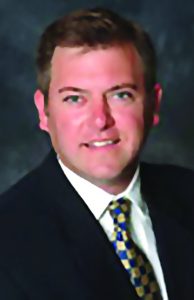
Courtesy Madison Wealth Managers
By R.J. DeLuke
A survey conducted by the American Institute of Certified Public Accountants says running out of money is a top concern among their clients when they are look ahead to retirement.
The elderly are living longer, said AICPA, and Baby Boomers, who hold the largest amount of retirement assets, are supporting both their parents and their children. This has amplified the fear.
Neil Edmonds of the Ascent Wealth Partners office in Saratoga Springs, who handles retirement matters for the company, agreed it is a big concern for people.
“There are not as many defined plans for retirement, like pensions,” he said, and in some cases people have nothing more than Social Security to fall back on.
Michael Brown, senior vice president with Madison Wealth Management, which has an office in Clifton Park, said “If you haven’t started to think about it in your 50s, it will be difficult.” The challenges to be comfortable in retirement are many.
“We’re living longer, so we have more years to pay for,” he added.
One of the most effective ways to save for the future, Edmonds said, is the 401(k) plan. With the disappearance of pensions and other retirement plans “it’s up to us now” to prepare for retirement and the 401(k) is “by far the number one way” to prepare for retirement.
Since its inception in 1978, the 401(k) plan has grown to be the most popular type of employer-sponsored retirement plan. Millions of workers depend on the money that they have saved in this plan to provide for their retirement years. Some employers contribute a percentage to boost the pool of funds for their workers.
Currently, said Edmonds, people under 50 can put away up to $18,000 in a 401(k) for the year and those 50 and older can add another $6,000. Those regulations also apply to 2017.
Unfortunately for some people they dip into their 40(k), withdrawing money for other things. It can be an unexpected health bill or some unforeseen emergency. Some people may even use it for something like a new vehicle.
But, “If you pull money out of a 401(k), it’s going to be taxed,” Edmonds said.
Someone pulling out $10,000 may need $13,000-$14,000 in order to pay the tax, Edmonds noted There is also a 10 percent penalty that will be tacked on.
The law regarding the saving plan “are encouraging you to save for your retirement,” Edmonds said.
When planning a 401(k), he said a rule of thumb is to have 10 times one’s annual salary in a retirement fund in order to live the lifestyle to which they are accustomed. Someone making $100,00 a year will want on the order of $1 million to maintain their average lifestyle. Someone making $50,000 will want about $500,000 in the account, he explained.
“It all depends on individual circumstances,” he said. The plan should take into account what a person’s expenses are and how much money will be needed to meet those expenses.
Brown also said taking money out of funds like 401(k)s and annuities can be troublesome. If a person does so, “your partner is the IRS … there are substantial taxes. People that over contribute can also be subject to penalties.”
“In order to avoid that, you have to play by the rules, but the rules are fluid. It’s a moving target,” said Brown.
Regarding investments people may have to get them through retirement, Brown said when people are getting closer to retirement, “that’s when you’re at your most risk.”
People can be saving and have money invested in certain markets but there can “bad luck … that is a part of it. The market can dip and people are dealing with what Brown called “a poor sequence of returns.”
The “sequence of return” risk to retirement spending, experts say, is a recognition of the reality that even if returns average out in the long run, it doesn’t matter if ongoing withdrawals deplete a stock portfolio before the “good” returns finally show up.
Those planning to spend the entire fund over the remainder of your life, take the risk that they could take out too much too soon and funds run out.
Now the market is high and interest is low, said Brown. “What if the market doesn’t do well in the few years leading to retirement or in early retirement? If you have a poor sequence of return” because the market dips “mathematically, it is very difficult to survive.”
When interest is up, it hurts the value of investment and when market is low, the rate of return is hurt.
He stressed not taking risks that have the potential to be damaged and keeping a careful eye on investments. Nonetheless, with low interest rates, “you can’t put money in savings accounts or money markets any more so, people are being forced to take more risks, whether we like it or not.”
Regarding Social Security, Brown said there were 81 different claiming strategies. Some of them have been eliminated by the government, but being informed on the available options may help a person uncover significant additional benefits. “Try to optimize now what the husband and wife will get, but what benefits are for the family.”
He said there are many good software programs that can assist in this process.
Also, said Brown, “We need some form of care as we age.”
It’s not just something like a heart attack that will require attention. There are various types of “cognitive impairment” where a person may still live a log time, but they still need money.
Long term health care insurance is one possibility, but there are some newer “better mousetraps” that can be loaded into insurance coverages that people can look into.
Said Edmonds, “Everyone does need a plan If there’s no plan, chances are you won’t really make it through retirement.”
